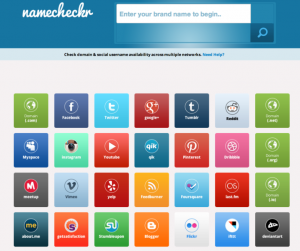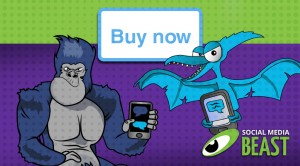— August 9, 2017
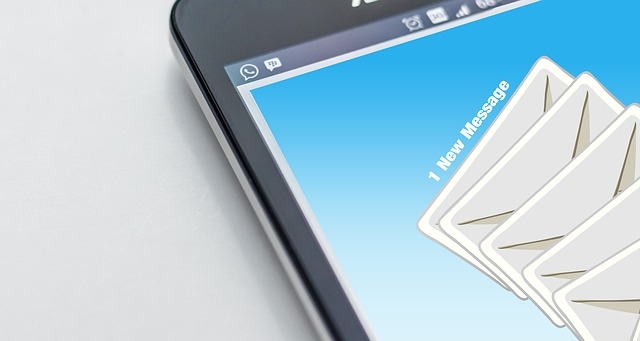
geralt / Pixabay
Throughout my childhood, I grew up with a familiar and constant mantra ingrained in my daily thoughts: always be prepared. This has manifested itself in various ways throughout my life, including my career in sales. At a young age, I realized that how you say something is certainly important. But I also found that what you say – word choice – is clearly just as critical. As I began my role as a Sales Development Representative at memoryBlue, I wanted to capitalize on a medium that allowed my ongoing commitment to strong word choice and messaging to come across in its purest form: email.
Words Matter, Choose Them Wisely
In this post, I’d like to cover some of the variables that go in to what constitutes an effective sales email (i.e. subject lines, open rates, ROI, personalization, and technology). Many of these variables are best examined by taking a statistical approach. Some statistics are not as specific as we would like them to be, but they can be just as, if not more, insightful from a broader perspective.
Before we dive into details, let’s get some understanding of the environment we’re working in today as sales pros. According to PEW Research (conducted in 2015), the median number of smartphone owners in developed economies is hovering around 70% for adults. That number is probably closer to 80% at this stage, which serves to highlight a thought that should be central to most sales pros and marketers: most emails are now opened on mobile devices. This means that each word must count in terms of value, as well as how much space it takes up on a 4 to 7-inch screen.
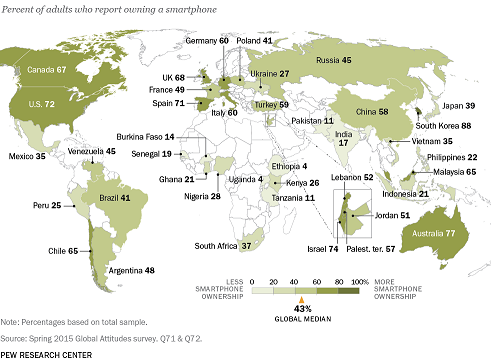
Percent of adults who report using a smartphone – Pew Research
This is data you must give serious weight to when considering the length of your emails. According to a study done by Boomerang, covered in an article by Hubspot, the optimal email body length rests between 50 and 120 words. This means you must be concise across the board. There is no room to expand and expound on a topic – grab the reader’s attention, offer some value and close with a call to action. That’s literally all you have time for and all that your emails should try to accomplish.
So just how do you grab attention in the modern business world? Let’s answer that question with a question…
What’s your favorite subject?
Subject lines are critical and they serve as the great gatekeeper in cyberspace. You’re not getting “in” unless you find a way to make this step a bullseye. Subject lines are so imperative, in fact, that Apple incorporated them as an option for text messages in one of their iOS updates a few years back. They are the first words a prospect sees in an email, and can be the make or break factor determining whether a reader opens your message or simply deletes it all without ever seeing the meat of things. And digging below the surface a little bit, the devil is truly in the details when it comes to the subject.
According to Adestra, personalized subject lines have open rates nearly 23% higher than non-personalized subject lines. This means name usage right in the subject line, among other things, can have a huge pay off.
According to Convince & Convert, 33% of recipients open emails based on the subject line alone. Right out of the gate, one out of three recipients have a wall that you will not get over unless you take time to craft a subject line that catches their eye. This statistic brings us to the first (and arguably the most crucial) step of crafting a good subject line: the amount of text. In additional research by Adestra, subject lines with 30 or fewer characters have above average open rates. Along those lines, according to Contact Monkey, subjects with three or more words are opened 15% less than those with just one or two words.
Stop and think about that for a second. Can you exercise that sort of brevity when you craft your next subject line? Statistics say you should!
These are statistics I came across early in my time in sales, and I quickly decided to build around them. I now take care to not use more than two or three words on my first couple prospect touches via email, and I always opt for the shortest subject lines I can possibly muster. This means I never “spill too much candy” from a sales point of view, and it requires minimal effort from the recipient to engage. It seems like a silly aspect to pay mind to, but once you realize that every aspect counts in an email, it’s a quick fix.
Words to Live By
After cracking the code on the amount of words to use, your actual word choice has every bit as much impact. As we have established, emails need to be as concise as possible. Consequently, it’s imperative to make the few words used in your subject lines count. ContactMonkey research indicates that each of the top five performing subject lines included “Re:” in them. This allows the recipient to presume that a dialogue has already taken place, which will motivate them to open the message. I will always incorporate an “Re:” subject line email into my cadence (usually on the second prospect touch) to maximize ability to get a return off the email. But fair warning: take caution with this approach. If the sales prospect hasn’t engaged in any conversation with you, there’s a risk that you’ll be offending them with the presumption of familiarity here.
On the flip side, messages containing “Fw:” in the subject line are opened 17% less according to Convince & Convert. This may be due to the idea that, if something is simply being forwarded, it is not as immediate or important, and it is something being broadly circulated.
According to Sidekick, a few words included in a subject line that boost open rates are:
- “Tomorrow” (10%)
- “Free” (10%)
- “New” (4%)
Conversely, words that dropped open rates include:
- “Quick” (17%)
- “Meeting” (7%)
- “You” (5%)
We can debate the reasons for these statistics, but it is good practice to follow the numbers and make sure you are choosing each word with a strategy in mind if you want to improve email effectiveness. Once you have perfected a select number of subject lines that grab attention, the spotlight turns to focus on the content of your email.
Carrying a message
While effective subject lines can be crafted and honed relatively quickly, the body of the email has much more depth and nuance needed during its construction. Statistically speaking, the strongest argument to be made when crafting the actual email is to focus on personalization.
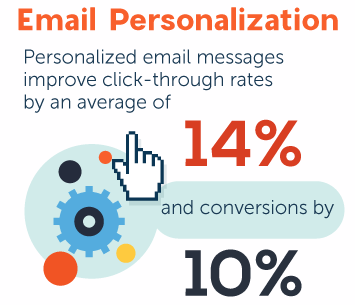
Source: Aberdeen B2B social media marketing study; Image Credit: AfterOffers.com
Understanding what makes an actual email tick in terms of successes and failures is hard to prove statistically, but one aspect that consistently stands out is personalization. Crafting your emails to specifically address each prospect you are reaching out to can immensely improve your click-through rates, response rates, and conversion rates. According to Aberdeen, personalized email messages improve click-through rates by an average of 14% and conversions by 10%.
Despite these widely available facts, an astonishingly low 39% of senders build personalized messages in email. According to a survey by CMO, over 90% of professionals agreed that personalization was important, very important, or extremely important for a message to resonate. The data argues that personalization is held in high esteem by both senders and receivers, yet not nearly as many people follow through with it. The common sales pro or marketer still opts to continue blasting out “one size fits all” mass emails.
How do I get noticed?
While social media has become embedded and institutionalized throughout western society, and companies clamor to make their presence known in the space, email still trumps the new platforms. According to McKinsey, email is 40% more effective than Twitter and Facebook. Despite the fact that email is still king, you must treat it delicately. Pay vital attention to your send frequency and avoid wearing out your recipients’ patience.
According to the Database Marketing Institute (DMA), open rates are highest when two emails per month are sent to a target. Another important aspect to consider: mobile devices have blown desktops out of the water on the consumption side. Open rates clear 50% on mobile devices according to Campaign Monitor (and in the same study, most of the phones that they are opened on are iPhones). On the other side, over half a billion Gmail users access their accounts on mobile devices according to TechCrunch. In short, email is incredibly valuable – but acknowledging how it’s consumed is a critical step for every sales pro. These facts affect every aspect of email construction.
If you’re still on the digital fence…
While many sales pros realize there are benefits to using email, some may still be skeptical of the pay off when investing a good bit of time and effort into the exercise is mandatory. Obsessing over the crucial details such as word counts, subject lines, send frequency, timing, personalization and more can seem daunting. Is it truly worth it?
In two words: you bet!
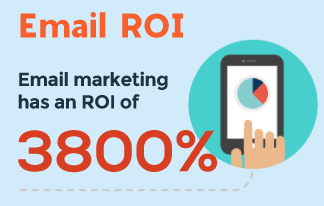
Source: Aberdeen B2B social media marketing study; Image Credit: AfterOffers.com
According to DMA, the ROI on email is a whopping 3,800%. That is an astonishingly high number, and makes it a clear choice for your sales tool belt. According to the same study, 77% of the ROI comes from segmented, targeted, and triggered campaigns. Better yet, as time goes on, ROI is continually increasing for email. From 2013 to 2014, email ROI increased threefold according to DMA. As mobile email access has improved and become commonplace, those numbers are only going up. With statistics like this, any argument presented as a reason to not use email becomes tough to swallow.
Win the War
The art of professional sales is often a war of attrition. Many believe it is purely a numbers game, and in many ways, it can be. Hopefully this statistical approach to sales email will help push you to utilize this powerful tool, or at least have a better understanding as to why many pros already do. Following the status quo is mediocre – go above and beyond! Blaze your own trail by not only incorporating email into your sales campaigns, but by crafting your email messages and cadence with precision. You won’t regret it.
Digital & Social Articles on Business 2 Community
(94)
Report Post